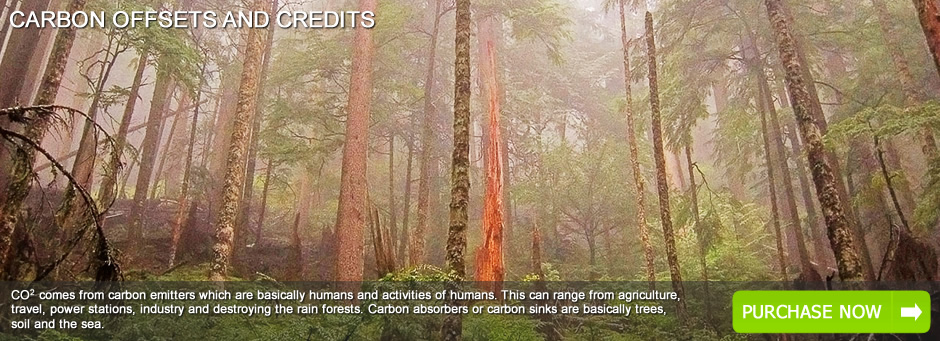
Through its green carbon initiative, Green Earth Africa is deeply involved in the process of developing a credible and comprehensive standard system for various carbon projects. Forest carbon projects are at the forefront of Green Earth Africa, and as you browse the web site you will see how Green Earth Africa is presenting these carbon offsets to the market, how it is developing communities, new forests and the prevention of deforestation and soil erosion which in itself is a huge source of carbon release.
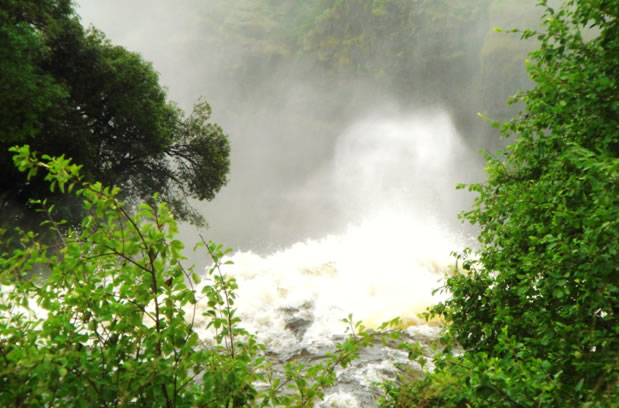
We are following very carefully the UN framework convention process to help ensure a credible and ambitious post-2012 global climate deal. We are discussing the methodological and technical issues with specialists and key carbon market players to ensure that the guidance we provide is relevant to their needs.
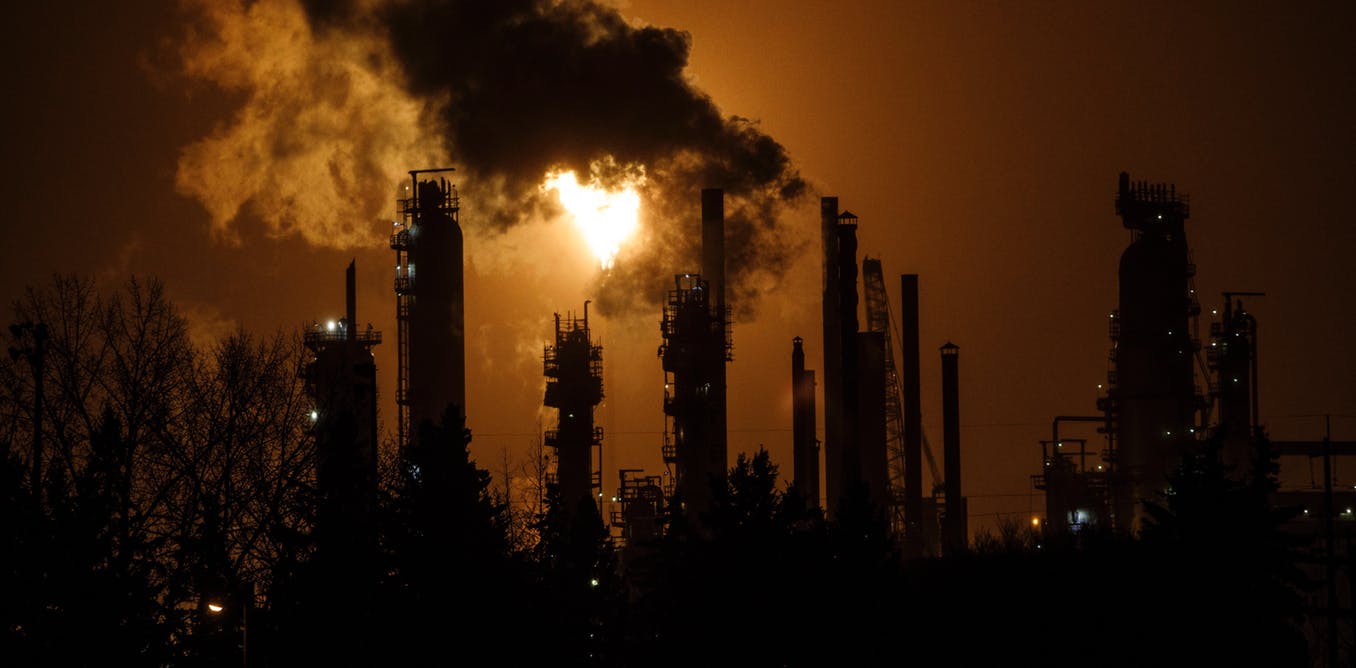
Finally, we are working closely with the most important existing standard systems that effectively address some of the key components of a comprehensive carbon standard system. These two systems are known as Carbon Emissions Reductions (CER’s) and Voluntary Emission Reductions (VER’s).CER’s are in accordance with the Kyoto protocols and VER’s fall outside the Kyoto protocols and include projects such as rain and tropical forest protection through carbon offsets sales. While Green Earth Africa, recognizes the value of these existing systems we find that no existing system covers all the necessary aspects of a comprehensive standard system for carbon projects, especially forest carbon projects from project design to validation, registration and ongoing monitoring and therefore Green Earth Africa trade in two types of VER’s , namely Reduced Emissions from Deforestation and forest degradation (REDD) and from the planting of new forests and reforestation projects. Green Earth Africa will be offering carbon offsets/credits using both all the recognized markets and are well placed for any new schemes should they be agreed upon.
Green Earth Africa has therefore adopted a meta standard approach drawing on the best practice guidance provided by these existing standards and and working with them to help expand our coverage and sharpen the precision of their “pass-fail” rules towards creating a credible and comprehensive methodological framework for forest carbon that could provide a broadly employed body of consistency guidance. In this way, Green Earth Africa forest carbon initiative can provide a convenient synthesis of necessary guidance and procedures to ensure offset investors and other stake holders that forest carbon projects can address a full range of social and environmental and carbon accounting issues to ensure high standards of environmental and social integrity.
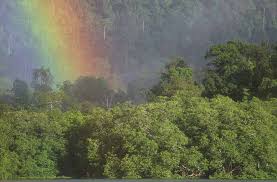
Green Earth Africa is promoting the application of a meta-standard framework (MSF), for forest carbon i.e. a comprehensive incredible umbrella framework that includes the best features of the key existing standards, at the same time Green Earth Africa, is planning to work with these existing standards to re enforce and strengthen areas where guidance or structure is thin and to sharpen their requirements. We do not propose certification of projects to this framework, rather we encourage projects adopting this approach to seek certification under the appropriate existing standard that compromises the MSF presented here.
Green Earth Africa has already demonstrated its commitment to ensuring rigorous standards for carbon offsets. We are working towards traceability and accountability through a unique map gridding system to ensure no offsets are sold or marketed twice. We are working towards a gold standard for the company and we hope to achieve this gold standard in the near future.
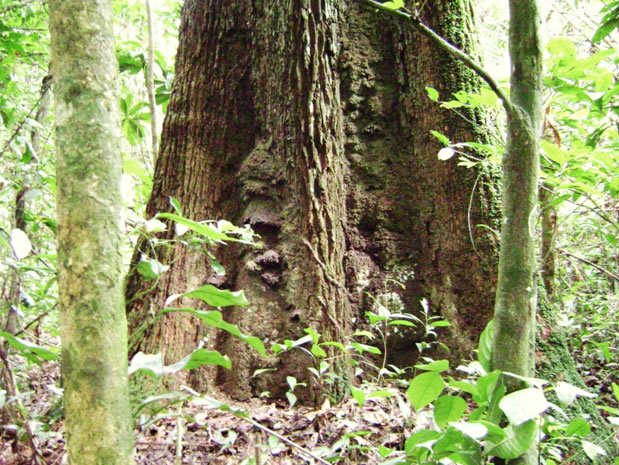

Forests have a vital role to play in the fight against global warming as the largest terrestrial store of carbon and after coal and oil the third largest source of carbon emissions. It is estimated that up to 30% of global emissions comes from agriculture, forestry and land use, two thirds of this from de-forestation and forest degradation, mostly in the tropics. It is increasingly recognized that avoiding catastrophic climate change would depend on holding the average increase in global temperatures to well below 2 degrees Celsius. A feat that will require the global emissions of green house gasses to be reduced by about 80% below 1990 levels by 2050, achieving cuts of such magnitude will require major reductions in all sources of green house gas emissions including those from deforestations and forest degradation.
Individuals, companies or governments can pay others to absorb or avoid the release of a tonne of CO2, in order to compensate for their own emissions. Purchasing such carbon offsets or carbon credits is becoming an increasingly common means for individuals, organisations and companies to reduce their carbon footprint.
The carbon offset market is split between compliance market and voluntary markets. Compliance offset markets are regulated by mandatory carbon reduction regimes such as the Kyoto protocols clean development mechanism (CDM) or the EU emissions trading scheme. Voluntary offset markets not associated with these mandatory regimes offer companies and individuals the opportunity to purchase carbon offsets on a voluntary basis as a means to compensate for their green house gas (GHG) emissions. While the voluntary market for carbon offsets is still small in comparison to the compliance market it is going up at a rapid rate. The growth in the voluntary market is mostly fuelled by what is commonly referred to as carbon neutrality ie organisations or individuals offsetting their emissions (From travel, production processes, heating of their homes etc) through the financing of projects that result in emissions reduction elsewhere.
Within the voluntary carbon markets, there is significant interest in forest carbon projects i.e. offset projects which are aimed to reduce GHG emissions through forest related measures such as rea forestation or measures to avoid deforestation and sustainable forest management. There is yet little experience of forest carbon offsets within the compliance markets since reducing the emissions from deforestation and forest degradation (REDD) is not included in the first phase of the Kyoto protocol although there is now an international consensus that the second phase of the protocol starting post 2012 must include mechanisms that recognize and provide incentives for VER and REDD projects.. The only forestry activities that are currently recognized by the Kyoto Protocol clean development mechanism (CDM) are a forestation and reforestation projects. The rules for these are complex however and very few projects have been implemented so far. The joint implementation mechanism does not recognise additional types of forest and land use related activities including agricultural carbon sequestration and forest management but again there has been little implementation of such projects to date.
There are a number of concerns surrounding carbon offsets in general and forest carbon offsets in particular. Indeed forest carbon projects may be especially challenging with potential problems including leakage, traceability and accountability. Green Earth Africa, through its lease hold agreements with governments, partnerships, companies and individuals, are able to ensure exclusivity on these vast tracts of land and has the full support of local communities through its community development programmes, job creation, education and most importantly through its openness with customers. Through its unique gridding programmes using the latest mapping and satellite technology, all customers, members of the public can see what blocks of offsets have been sold, to whom (should the customer wish it to be known) and what blocks and amounts are still available. The average tonnage of CO2 offsets per block has been carefully verified and these amounts are made available on the various blocks in various regions. For example, in dense equatorial rainfall forest, up to 800 tonnes per hectare (360 tonnes per acre) can be absorbed per annum, but in a lower rainfall, Savanna bush-veld as little as 80 tonnes per hectare (36 tonnes per acre) can be absorbed per year.

Green Earth Africa believes that forests carbon offsetting if used appropriately could play an important and perhaps crucial part in the global strategy to reduce carbon emissions and contribute to sustainable development helping to catalyse the global economy to transforming to a low carbon economy whilst improving the lives of people in a developing world. Through its initiative, Green Earth Africa, therefore, aims to ensure that forest projects are carried out in ways that ensure the protection of existing forest by community diversity and promote a range of other environmental and social values including clean water, anti-poaching, poverty alleviation and respects for the rights of indigenous peoples and other local communities. Green Earth Africa is committed to helping ensure that carbon offset projects meet high standards of environmental and social integratory, consistent with the millennium development goals and internationally accepts norms of corporate social, environmental financial and governance responsibility.
Green Earth Africa while working along the guidelines of REDD, VER’s and CER’s we aim to promote and to have the broadest possible impact on environmental and carbon markets and other forest conservation and sequestration initiatives. Green Earth Africa will provide the development and adoption of standards for forest carbon projects that can ensure rigorous carbon accounting practices to the environmental and social safeguards and corporate responsibility practice consistent with Green Earth Africa’s policies on indigenous people’s right, benefit sharing and sustainable forest management through our community development programs.
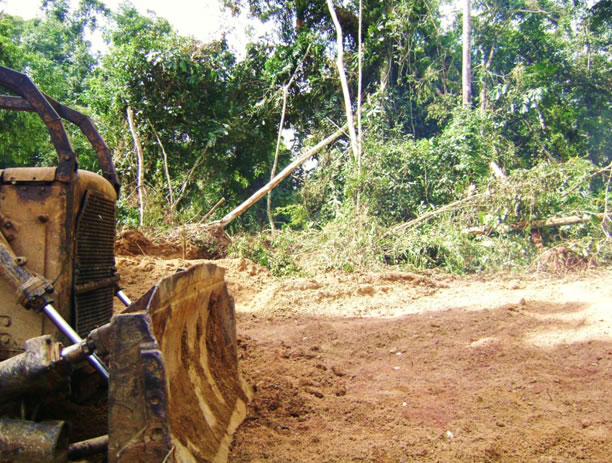
CO2 comes from carbon emitters which are basically humans and activities of humans. This can range from agriculture, travel, power stations, industry and destroying the rain forests. Carbon absorbers or carbon sinks are basically trees, soil and the sea. These are called carbon reservoirs or carbon sinks. The sea holds approx 38,000 billion tonnes of CO2 or 86% of all carbon is stored in the oceans. CO2 is soluble in water. Approximately 2 billion tonnes a year of CO2 is absorbed by the oceans. Trees and forests are also classified as carbon sinks and are very important in helping control climate change or global warming. Northern forests don’t absorb as much CO2 as tropical rain forests because during the northern winter these trees shut down. The rain forests operate the whole year and it is therefore very important that they are looked after.
Land, vegetation and soil all store about 1 billion tonnes of CO2 a year; the problem is that people like to chop down the rain forests for:
Once the trees are cleared they can no longer absorb the CO2, but once they are cleared in the normal subsistent farming way or for large scale agriculture, the trees are burned which then releases CO2 into the atmosphere. As the land is tilled, carbon which has been stored in the soil by absorption from the trees is also released. Agriculture is the main producer of CO2, not only from farming but also from destroying the rain forests for more land, growing the crops which need fuel for the tractors, combines, fertilizers and chemicals, all this has to be made and transported and is burnt during the process of ploughing, planting, spraying, harvesting and transport back to the markets.
The biggest producers of CO2 are the G8 country which account for 50% of all emissions. The countries where the rain forests are help suck in the CO2 from the atmosphere but are the least polluters. Therefore the rich nations are causing problems for the poor nations who have some of the answers to carbon reduction and climate change.
Green Earth Africa has large tracts of forest land situated throughout Africa, either under direct lease from Governments with agreements that Green Earth Africa will help protect these areas and create employment and community development or they have direct marketing agreements with various governments on large tracts of state owned forests, national parks. Green Earth Africa also has private contracts with individuals or companies who have large conservancies throughout Africa. The object of having the agreements in place is to help reduce tropical deforestation which will be vital if the world is to avoid catastrophic climate change and preserve important ecosystems functions.
Rain forests cool the planet, regulate the water cycle and provide a home to millions of species. It is right and essential that the world pay for these services. In addition to the support the forests provide for livelihoods of millions of the world’s poor, tropical rain forests provide important ecosystem services to the global community. They store water, regulate rainfall and contain over half the planets eco diversity. Most importantly tropical forests play a crucial role in climate change. Omissions from tropical deforestations contribute 17% of annual green house gas emissions while conserved rain forests continue to sequester the same amount of atmospheric carbon each year. Tackling the issue of deforestation will be essential if the world is to achieve the goal of limiting global warming to below 2 degrees Celsius this century and avoid catastrophic climate change.
Rain forests have been lost at an alarming rate mostly because of destructive logging and conversion to agriculture land which provide compelling financial returns. Previous initiatives have lacked the funding and been unable to generate the necessary political will for the world to tackle deforestation. Although climate changes now direct more attention to this issue it is likely that a forest carbon scheme agreed to through the UNFCCC make take many years to generate financial returns of sufficient scale to slow down and even halt the destruction of the forests. In the meantime, the world could lose an additional 100 million hectares of tropical rain forests, an area about the size of Egypt. Green Earth Africa believes that an emergency package is needed to decrease tropical deforestation rapidly. This can only be done by addressing the economic drivers of deforestation and providing strong financial incentives to rain in forest nations. The forests need to be worth more alive than dead.
Rather than wait for long drawn out complicated United Nations Heads of States agreements to be put in place, Green Earth Africa is taking the initiative to begin trading carbon offsets from these rain forests which it has under its management and are offering credits on a yearly or futures trading scheme or a bonds issue as an insurance policy for many companies or individuals who are wanting to reduce their carbon footprint immediately. With the new cap and trade system there will be a scramble for offsets and once the official forest carbon market is put in place, which is foreseen to take many years before this will happen, the price of this carbon will trade for billions and billions of dollars. Taking action now will give these companies a far better chance to achieve its own climate stabilization goals and green credentials, it will be financially rewarding and if that company wishes to invest in carbon credits for trade at a future date or company bonds, obviously the time will be to purchase now. Green Earth Africa has a unique gridding scheme using Google Earth which has the exact co-ordinates of the conservancies, forests, national parks and its management. Each area is gridded into blocks of 1000 (one thousand) hectares and the foliage in these areas has been surveyed by teams on the ground employed by Green Earth Africa and an average absorption of CO2 per year has been established depending on the foliage in the relevant area. Green earth Africa can then calculate a number of tonnes of CO2 which would be absorbed per area per year. These areas are then sold as carbon offsets. Once a specific area on this grid has been sold it is blocked off and awarded to each individual or company who has purchased these credits. This system will ensure accountability and traceability and prevents the same carbon offsets being traded twice. This management is fully in the hands of Green Earth Africa, there is no governmental interference and the funds are then dispersed to the communities on the ground, employment creation, community development, policing of the forests and for further development in reforestation projects to areas of forest which has been destroyed. The community development funds are under the control and management of Green Earth Africa and are not released into government hands to ensure the funds are channelled directly into the community developments such as education, medical, water, sanitation and job creation and poverty alleviation.

Through its carbon saving initiatives, Green Earth Africa are also able to offer large agricultural and construction companies soil carbon and soil erosion offsets. Carbon is a key ingredient in soil organic matter (57% by weight).Plants produce organic compounds by using sunlight energy and combining carbon dioxide from the atmosphere with water from the soil. Well decomposed organic matter forms humus, a material that provides a carbon and energy source for soil microbes and plants. When soils are tilled, organic matter previously protected from microbial action is decomposed rapidly because of changes in water, air and temperature conditions, the breakdown of soil aggregates accelerates erosion. A soil with a high organic matter is more productive than the same soil where the organic matter has been lost through tillage, pro farming practices, and water and wind erosion.
Organic matter is being lost from our crop lands mainly through ploughing which makes soil more likely to erode, water erosion, wind erosion as exemplified by the dust bowl in the USA plains. Research has showed that CO2 gas is lost directly from the soil in proportion to the soil loosened. Once soil is loosened, not only is CO2 gas released when ploughed but more CO2 is released into the atmosphere during the erosion of the soil through wind and water action. Millions and millions of tons of soil are lost forever every year due to erosion; along with this loss million and millions of tons of CO2 are released into the atmosphere. Most erosion is caused be deforestation, biomass burning and poor agricultural practices. Costs to the environment are severe and human welfare is directly impacted by the loss of productive agricultural land, increased flooding, silting of reservoirs and rivers. The more land that is lost the more forests are destroyed to pave the way for more agricultural land. The same human activities that cause erosion increase the amount of CO2 in the atmosphere. It is estimated that agricultural and land use changes since the industrial revolution have released CO2 equal to three-quarters of the CO2 released from fossil fuel emissions.
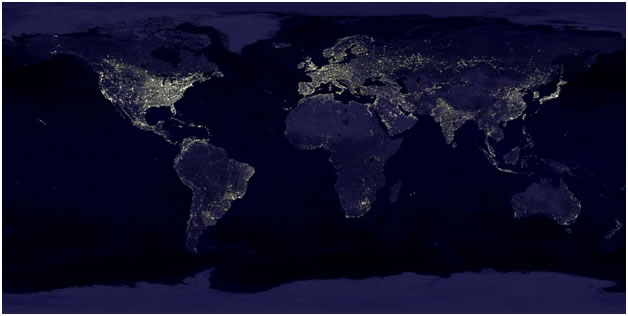
Through its conservation practices of the conservancies, national parks and forests which Green Earth Africa has under its management very little tillage is happening on these vast tracks of land due to our trading of the carbon offsets which creates alternative sources of income for the communities, alternative job creation and prevents the forest from being destroyed for new agricultural land use and illegal logging. Green Earth Africa is also in consultation with many large commercial farmers across Africa to introduce minimum tillage method creating a new carbon bank for trade. Through this protection of the soil, Green Earth Africa is in a position to offer soil credits to large commercial agricultural farming companies who may be looking to reduce their carbon footprint either by choice or by new Cap and Trade regulations. Green Earth Africa is working with the Chicago Climate Exchange, CCX Agricultural Soil Carbon Offsets.
Please follow the various links to various carbon calculators. See which link is the best for you. We have links for how much carbon you produce for when you cook, how much carbon your house produces, how much carbon you produce when you fly, how much carbon you produce when you drive. Work out your footprint; if you need to or want to offset your footprint please follow our link to purchase personal offsets. Each offset is certified and you will be sent a certificate for your offsets.
On average in the western world, each person produces 25 tonnes of CO2 per year. In the developing world, each person produces about 2 tonnes per year. How do you know Green Earth Africa has the carbon offsets to trade and how do we work it out? Through our various forests which are spread across Africa, obviously the type of forest and the density of the forest changes from region to region. In the savanna bush veldt, there is an average of about 120 trees/hectare. These trees are of medium size and absorb on average 1.2 tonnes of CO2 per year. With our teams on the ground, we have accurate counts of trees and we are then able to calculate the average number of trees per hectare by the average size, so if there are 100 trees per hectare each absorbing 1.2 tons then that hectare has 120 carbon offsets eligible for trade. In the denser tropical rain forests such as those in the Democratic Republic of Congo, Rwanda, Central African Republic obviously these rain forests are far denser than the average Savannah bushveld. These areas have an average of 350 trees per hectare and are far bigger than the average species of tree on the savannah bushveldt. These trees can absorb 3 tonnes of carbon dioxide per year. So if there are 300 trees per hectare each absorbing 3 tonnes, 900 tonnes of carbon dioxide can be traded from the areas within this tropical rain forest. Green Earth Africa also has a large reforestation project planting various trees and we do like to plant indigenous trees such as Albizia. An Albizia is a very quick growing large foliage tree and can reach the size of a mature oak tree in the space of ten years. We also plant eucalyptus which is an exotic species to Africa but the reason for planting this tree is that it grows very quickly and it reaches harvest maturity within six years, it can be harvested and used for cooking fuel rather than the rain forest being destroyed for cooking fuel. These plantations are planted on previously cleared savanna bushveld and the trees have other uses for such as medical, timber production bio-fuel production, bio mass production, construction material as well as home use for cooking. These trees also once harvested reshoot and produce double the volume of timber within the next six years. They can be harvested four to five times before it is advisable to clear them and replant the whole plantation.